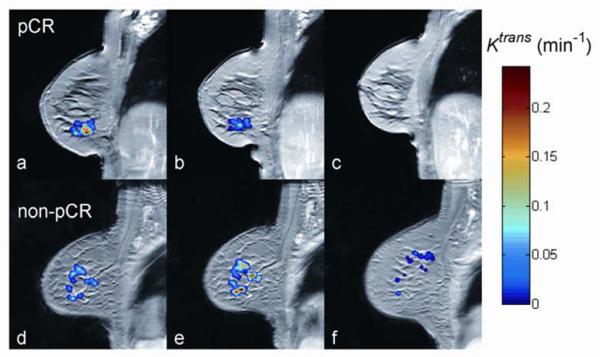Fig. 1.
Dynamic contrast-enhanced MRI (DCE-MRI) as a quantitative imaging (QI) technique for assessing breast cancer response to neoadjuvant therapy (color overlay = tumor). The top row illustrates an early reduction in the quantitative DCE-MRI parameter Ktrans in a patient who had a documented pathological complete response (pCR) at surgery (A: prior to therapy, B: after one cycle of neoadjuvant therapy, C: at the conclusion of neoadjuvant therapy). The bottom row illustrates an early increase in Ktrans in a patient who had residual disease (non-pCR) at surgery (D: prior to therapy, E: after one cycle of neoadjuvant therapy, F: at the conclusion of neoadjuvant therapy. (Image courtesy of Lisa Li, Ph.D., Vanderbilt University)

